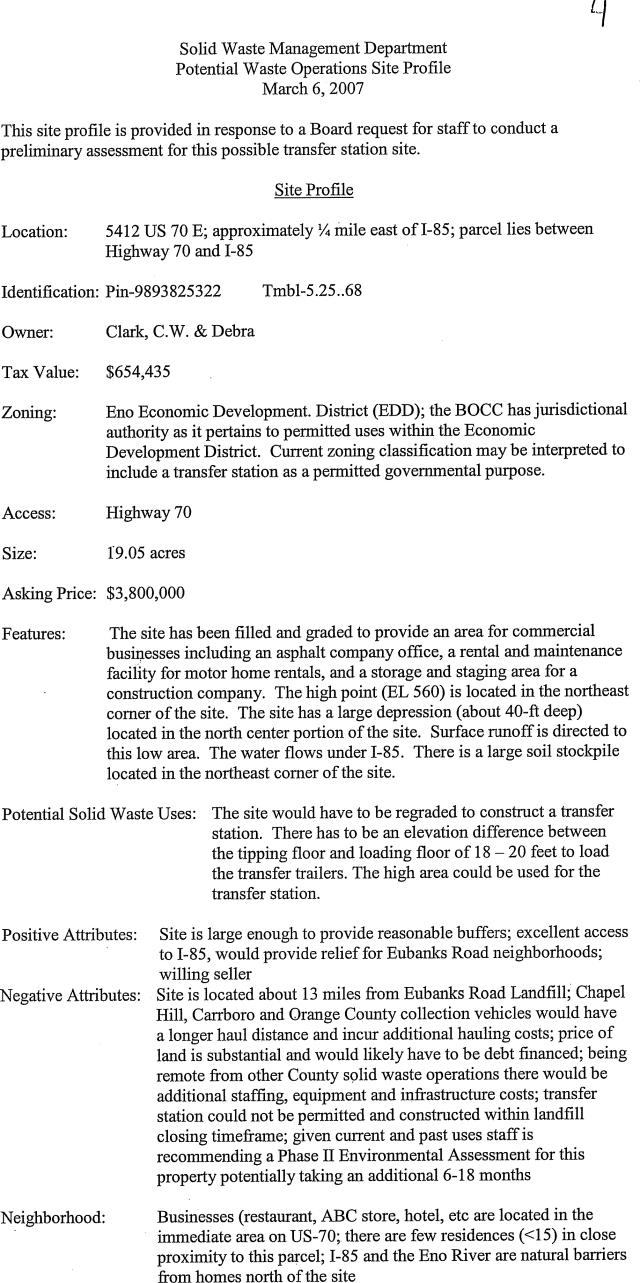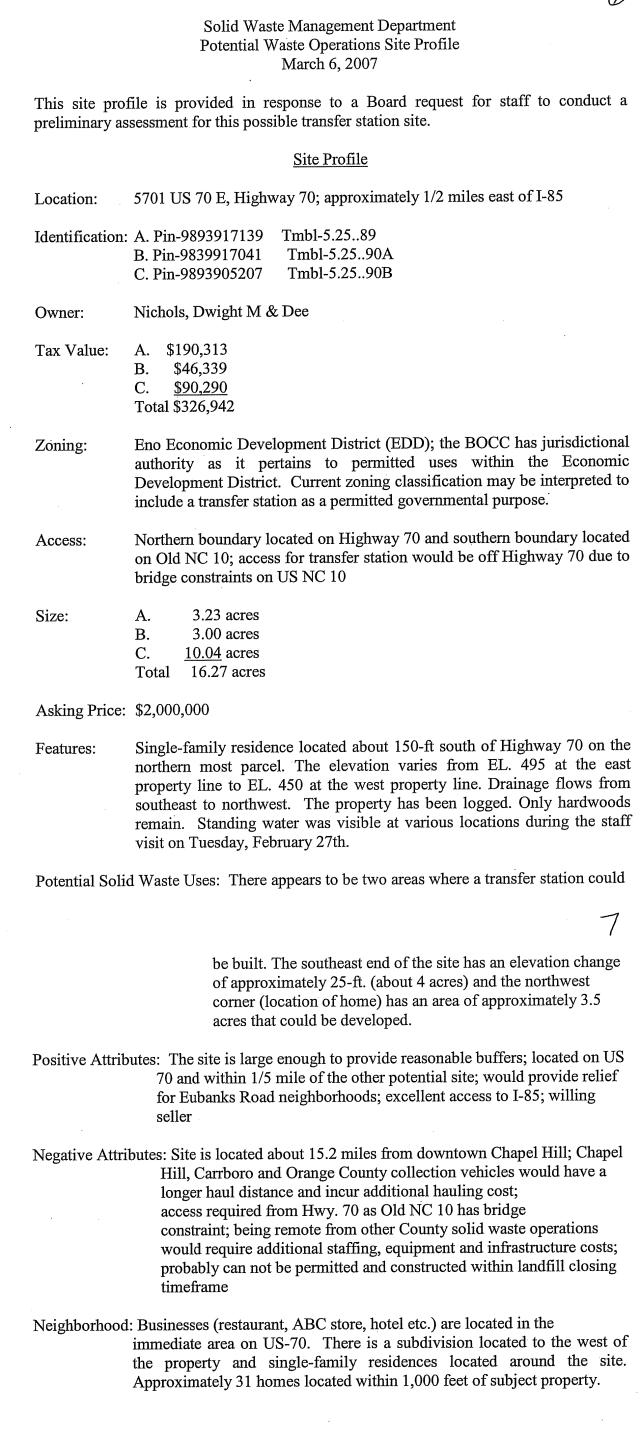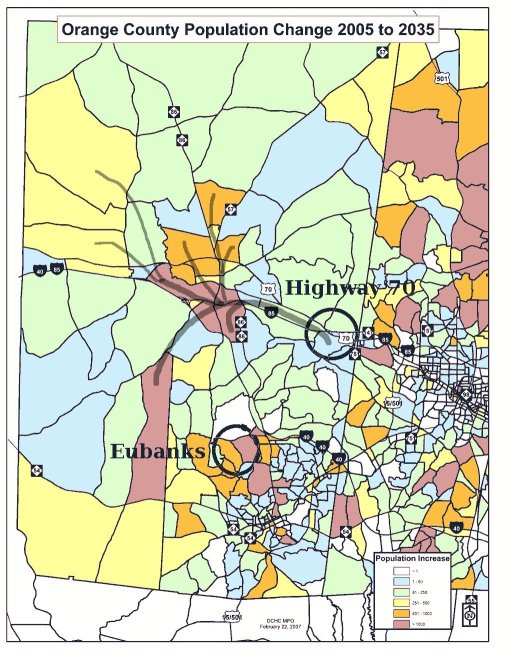I quoted in my post Trash Talk: 1 Megawatt of Waste Not Methane, Want Not Energy… a February, 2006 GeoTimes report titled Recovering Landfill Gas for Energy. Two of the authors, Amarjit Riat and Wayne Blake-Hedges work just North of us at Virginia’s Fairfax County I-95 landfill complex [MAP & INFO]:
Riat, a professional engineer, is chief of the I-95 Landfill Complex in Fairfax County in northern Virginia, and has 20 years of experience in construction and management of sanitary landfills. Blake-Hedges is senior engineering technician for the I-95 Landfill Complex, and has 16 years of experience in construction, operation and maintenance of landfill gas systems.
What struck me about this article was the breadth of experience Fairfax County developed in implementing their land fill gas recovery system – a system first implemented 17 years ago.
The landfill gas extraction system in Fairfax County started in 1989, to keep landfill gas from migrating offsite to a neighboring prison complex (Lorton Youth Center) and for future beneficial use of the gas. The original 27 exterior passive vents were converted to extraction wells, including seven interior extraction wells. The seven interior wells were meant to serve as enrichment wells, to ensure that the gas composition had enough methane to allow the gas to be burned in an incinerating flare. On startup of this system, the flow of gas was considerably greater than anticipated, with flows averaging 700 to 900 cubic feet per minute. The county awarded a contract for landfill gas utilization to Michigan Cogeneration Systems, Inc. (Michigan Cogen), in 1990, when it began construction of its first landfill gas-to-electricity plant. The plant went online in December 1991. This first plant utilized 1,150 cubic feet per minute of landfill gas to generate 3 megawatts of electricity for direct sale to Dominion Virginia Power, the local electrical utility. The plant houses four generator units, each capable of producing 800 kilowatts of electricity. Approximately 200 kilowatts are used by the plant, leaving a 3-megawatt net output. Subsequently, the I-95 landfill began expanding its landfill gas collection system and piping to deliver gas to the new landfill gas-to-electricity plant.
Building upon their initial success, Fairfax has expanded their utilization of recovered gas and continued to upgrade their facility as recently as 2005.
In 1992, Michigan Cogen began constructing a second 3-megawatt electrical generation facility. This plant became operational in January 1993, and is essentially identical to the first plant. Like the first, it is also solely fueled by landfill gas. This system consisted of 75 additional interior landfill gas extraction wells, 22 horizontal collection trenches and collection piping.
In May 1997, Michigan Cogen began operating its third landfill gas utilization project. This facility compresses the landfill gas into 10 pounds per square inch, removes the majority of moisture and then delivers the dry gas to the Noman Cole Pollution Control Plant for use in sludge incineration. In an afterburner process, the gas cleans up the emissions from sludge incineration.
This landfill gas replaces natural gas previously purchased from Washington Gas. Instead, pipelines deliver gas directly from the I-95 landfill to the Noman Cole Pollution Control Plant. Landfill gas utilization by the pollution control plant is extremely variable and is based on the amount of sludge incinerated and the moisture contained in the sludge, but averages between 300 to 1,400 cubic feet per minute.
In March 2005, five standard natural gas infrared heaters were retrofitted and installed in the maintenance building of the I-95 landfill. These units replaced two existing propane-fired forced air heaters and tapped the existing pipeline that delivers landfill gas to the Noman Cole wastewater facility. A simple treatment system was installed to remove any remaining moisture and contamination. After treatment, the gas is delivered to the heaters through a stainless steel piping system. The radiant heaters use a maximum of 30 cubic feet per minute of landfill gas.
An interesting factoid they present is that “A 1-megawatt electric power plant working on an internal combustion gas engine needs a sustained flow of about 350 standard cubic feet per minute of landfill gas.”
As I noted before, based on SWAB member Randy Kabrick’s 500,000 cubic feet of methane being out-gassed from our “older”, less productive landfill into the atmosphere daily, our county is currently wasting at least 1 megawatt of electrical generation capacity.
Worse, methane as a greenhouse gas is considered to be more harmful than CO2.
Methane is about 21 times more powerful at warming the atmosphere than carbon dioxide (CO2) by weight (see box below). Methane’s chemical lifetime in the atmosphere is approximately 12 years. Methane’s relatively short atmospheric lifetime, coupled with its potency as a greenhouse gas, makes it a candidate for mitigating global warming over the near-term (i.e., next 25 years or so).
Worse yet, the “21 times more powerful” is considered by some to be a gross underestimation as the NASA reports Methane’s Impacts on Climate Change May Be Twice Previous Estimates.
Of course, the benefits extend beyond displacing “outside the county” sources of energy and mitigating gas releases:
Using landfill gas for energy is a win-win opportunity. Landfill gas utilization projects involve citizens, nonprofit organizations, local governments and industry in sustainable community planning, and they create partnerships. These projects go hand in hand with community and corporate commitments to cleaner air, renewable energy, economic development, improved public welfare and safety, and reductions in greenhouse gas emissions.
Directly using landfill gas to offset the use of another fuel (natural gas, coal and oil) is occurring in about one-third of the currently operational projects. This direct use of landfill gas can be in a boiler, dryer, greenhouse or other thermal applications. Innovative direct uses include firing pottery and glass-blowing kilns; powering and heating greenhouses and an ice rink; and heating water for an aquaculture (fish farming) operation. Industries currently using landfill gas include auto manufacturing; food processing; pharmaceutical manufacturing; wastewater treatment; consumer electronics; and paper and steel production, just to name a few.
Generating energy through the landfill gas projects provides many environmental benefits. The projects assist in destroying methane, a potent heat-trapping gas, and offset the use of nonrenewable resources such as coal, natural gas and oil. They help reduce air pollution, and the landfill gas emitted from decomposing trash is a reliable and renewable fuel.
The benefits from the I-95 landfill project are approximately equal to any one of these: removal of emissions equivalent to 50,000 vehicles, planting 72,000 acres of forest, offsetting the use of 1,300 railcars of coal or powering 3,800 homes.
The technology is also cost-saving. The savings in fuel costs are approximately $500,000 annually from the landfill gas use at the Noman Cole Pollution Control Plant and $5,800 from use of landfill gas for heating the maintenance building at the I-95 landfill.
This from folks that have decades long experience with this technology. The complete Feb. 2006 GeoTimes article is here.





